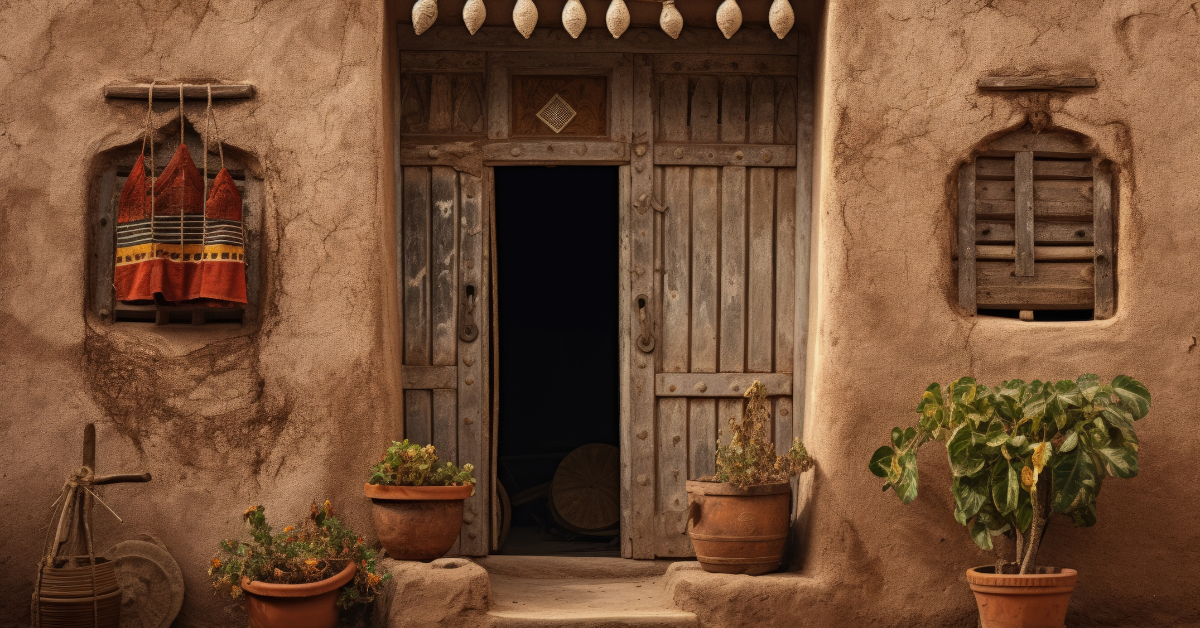Embracing Eco Homes: Discovering the Magical Lifestyle of Mud Houses

A home that emanates the smell of nature, where the walls radiate warmth in winter and coolness in summer, and every corner whispers tales of ancestral craftsmanship—that’s the beauty of eco homes. These are not merely rustic shelters made of earth. They are vibrant, living examples of sustainability, heritage, and thoughtful design.
More than just affordable dwellings, mud homes—crafted from the planet’s simplest elements—stand as symbols of balance between man and nature, past and future.
The Magic of Mud
Mud is the cleanest and most abundant material available to us directly from Mother Nature. It’s biodegradable, non-toxic, breathable, and thermal-efficient.
Living in a mud house brings a peaceful feeling that concrete homes often can’t match. These houses stay cool in summer and warm in winter without needing machines. They are free from harmful chemicals and help people feel closer to nature. For those in villages and hills, mud homes offer comfort, warmth, and memories that last a lifetime.
The Crafting Process
Eco homes begin with a process that is both scientific and spiritual. Bricks made from mud, sand, straw, and water are molded and dried, creating a foundation that is solid, breathable, and environmentally friendly. Cow dung is often added as a natural binder that increases structural strength and wards off pests.
Advanced methods may include mixing quarry sand or limestone to reinforce the bricks. Thanks to mud’s self-healing qualities, even minor cracks get sealed with the help of rain, making these homes long-lasting and low-maintenance.
The thermal mass of mud ensures homes stay cool in summer and warm in winter, reducing the need for artificial temperature regulation.
Eco Homes Are Healing Homes
Eco homes are often described as healing spaces. Built using natural elements, they contribute to better mental well-being and air quality. They do not trap pollutants like synthetic homes and instead allow for healthy airflow. Their quiet, earthen interiors ground you—emotionally and physically—reminding you of a simpler, more wholesome existence.
Expressions of Creativity in Designing
Designing a mud house isn’t just about construction—it’s an art. From embossed motifs and carvings to intricately designed alcoves and ceiling structures, each detail showcases the heritage and imagination of the builder.
In many cultures, decorative panels, ethnic reliefs, and symbolic patterns are woven into the structure. These elements are both ornamental and educational, offering insights into the daily life, mythology, and spiritual beliefs of the community.
Cultural Specialties That Enhance Aesthetic Appeal
Many tribal and rural communities incorporate cultural elements into their homes. Carvings, mural paintings, relief work, and symbolic geometries add rich narrative layers. These embellishments are not random; they represent stories, values, and dreams passed down through generations.
Natural Hues to Enhance Beauty
Rather than using synthetic paints, many eco homes are decorated with mineral pigments, natural dyes from plants, and clay-based colors. These paints not only add visual warmth but are also non-toxic and environmentally safe.
In African tribes, colors carry meanings—white represents purity and protection, while reds and blacks denote strength and fertility. These are applied not just for beauty, but for harmony and tradition.
Shape and Features of Traditional Eco Homes
Eco homes differ vastly in form and function across cultures. Rounded shapes help resist wind and earthquakes, while thick walls offer thermal insulation. Ceilings may have decorative wooden rafters or earthen domes. Niches, shelves, and low seating are built directly into the walls—an elegant fusion of utility and aesthetics.
Global Examples of Mud House Brilliance
1. Gurunshi Earth Houses of Ghana
In Tiebele, Ghana, the Kassena tribe builds symbolic houses from mud and dung, with shapes signifying family roles—rectangles for bachelors, squares for couples. The walls are painted with striking black-and-white motifs that narrate identity, rituals, and social structure.
2. Mud Houses of Himachal Pradesh
The Gaddi tribe’s traditional homes are a marvel of thermal insulation and seismic resistance. Crafted with rock foundations and mud-plastered walls, they reflect the Himalayan environment and cultural identity.
3. Painted Mud Homes of the Ndebele
Zimbabwe’s Ndebele women turn homes into vibrant canvases. Using symbolic geometric patterns and vibrant natural colors, they convey messages of family, emotion, and strength. Each home is an individual masterpiece.
4. Great Mosque of Djenné, Mali
This iconic structure is the world’s largest mud building, constructed using adobe bricks, palm wood, and plaster made of mud and rice husks. Every year, villagers come together for its replastering—a festival that reaffirms their connection to culture and community.
A Return to Nature in a Modern World
As sustainability gains urgency, more people are returning to eco homes as a conscious choice. They are opting for organic foods, zero-waste practices, natural fabrics—and yes, earth-built homes.
Eco homes teach us that modern comfort doesn’t need to come at nature’s expense. They prove that beauty, wellness, and sustainability can coexist in harmony. When we choose to live in such homes, we embrace a slower, richer, more connected way of life.
Conclusion
Eco homes are not just architecture—they’re a philosophy. From the humble mud house to the majestic mosque of Djenné, these living structures honor tradition, support well-being, and safeguard the future. In an age of steel and glass, mud whispers a message: “Come home to the Earth.










